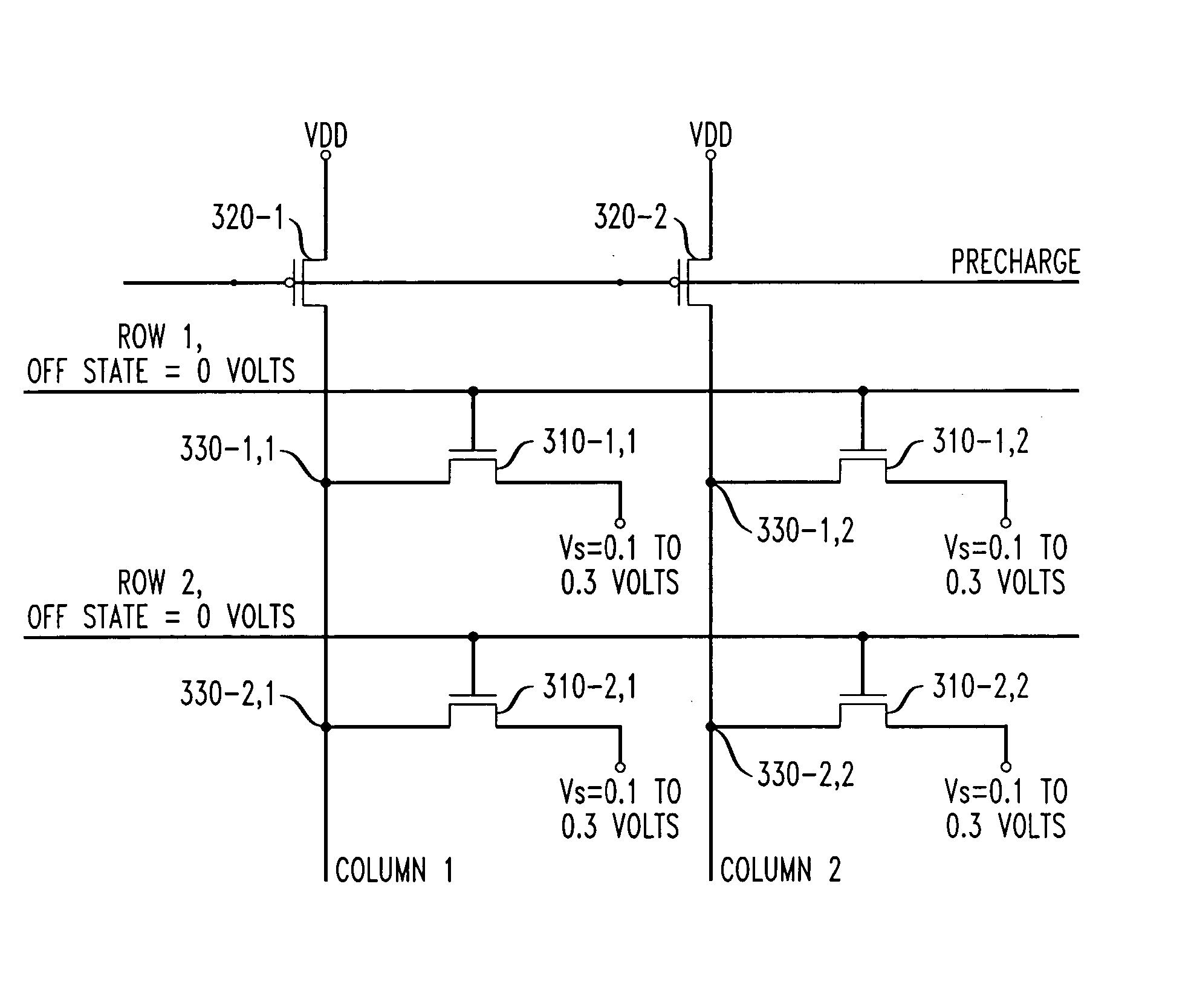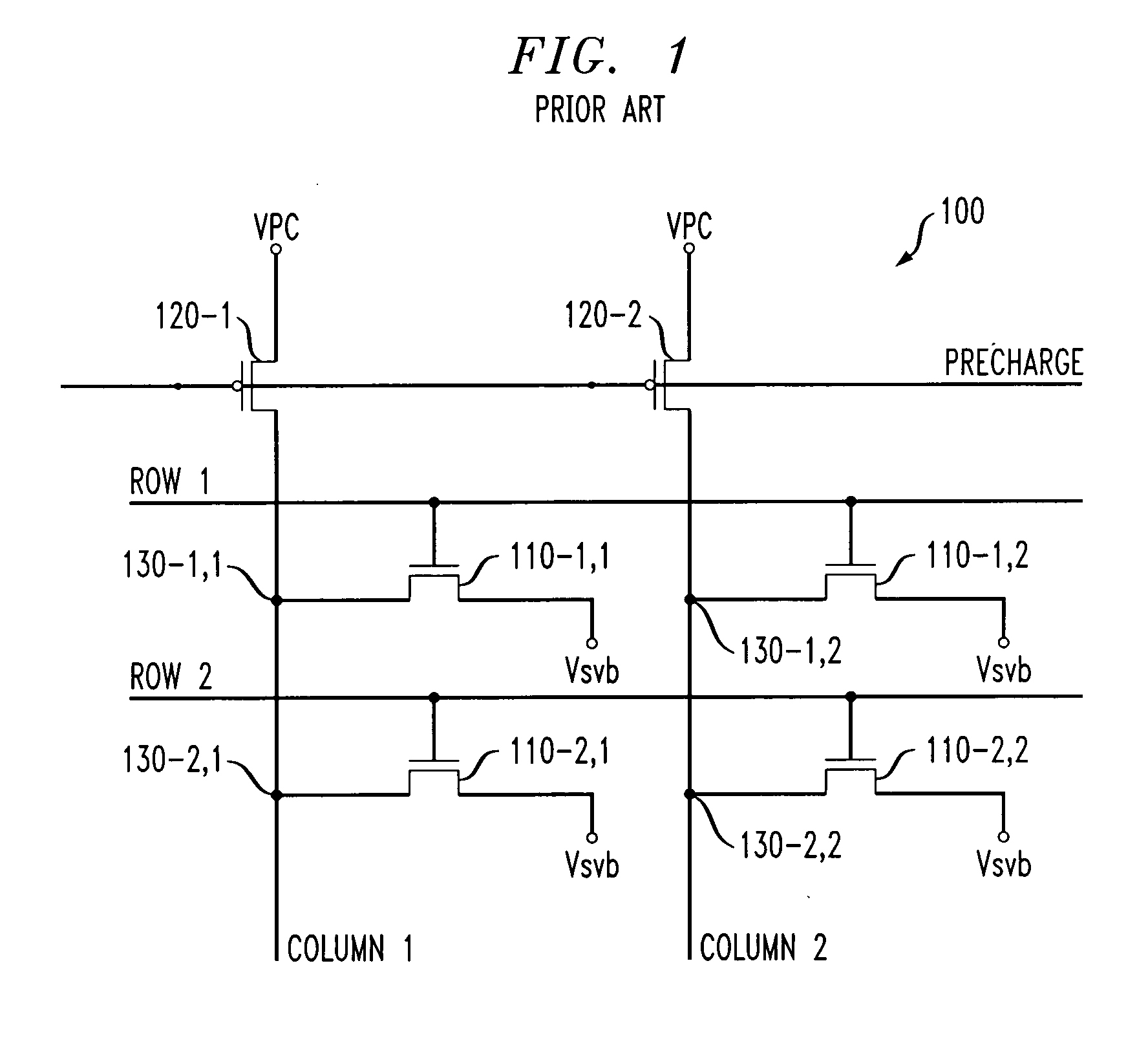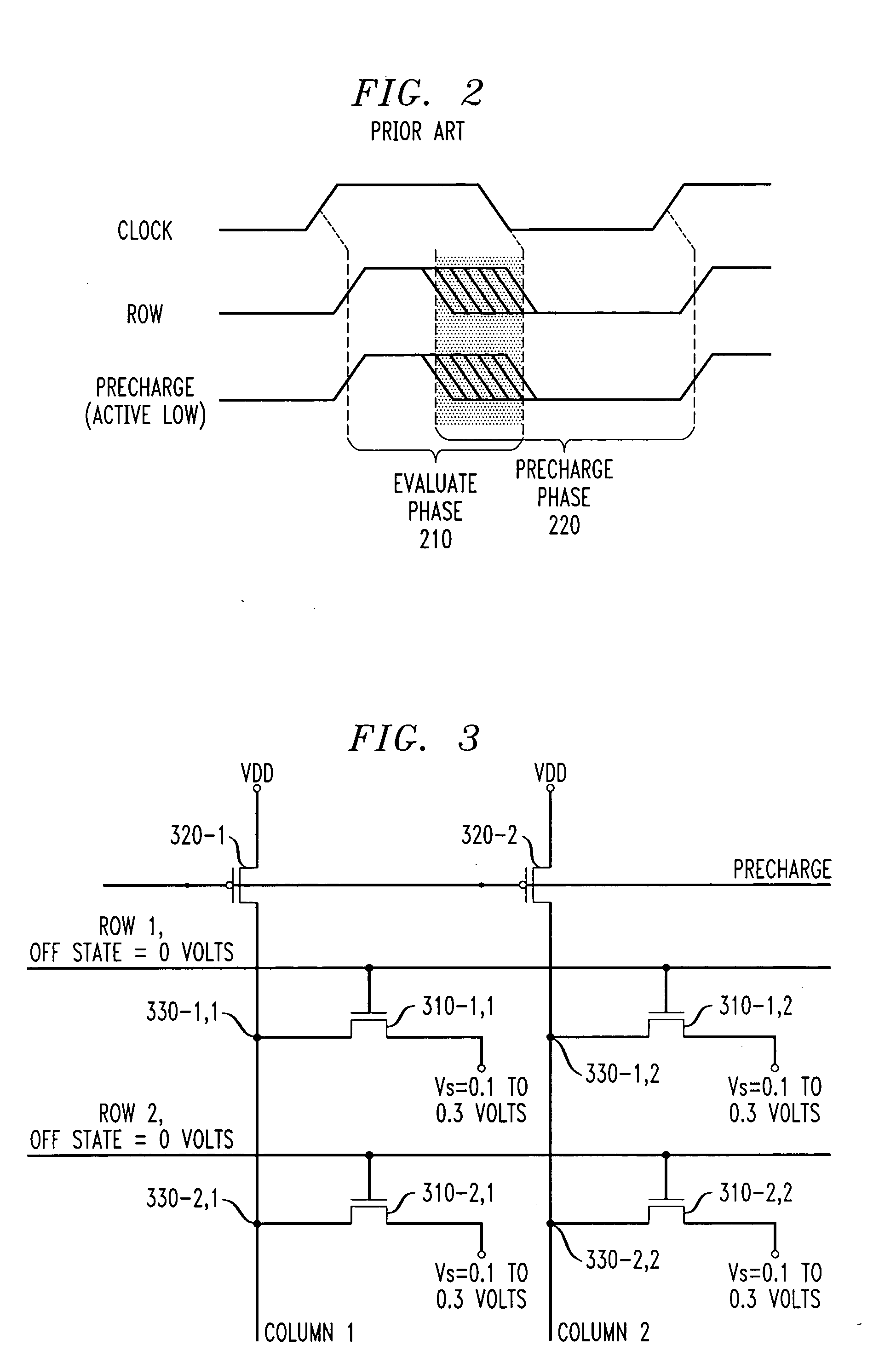Method and apparatus for reducing leakage current in a read only memory device using transistor bias
a technology of read only memory and leakage current, applied in the field of leakage current reduction of electronic memory devices, can solve the problems of high leakage current, transistor sub-threshold leakage current, and significant leakage current of transistor sub-threshold, and achieve the effect of reducing leakage current and reducing leakage curren
- Summary
- Abstract
- Description
- Claims
- Application Information
AI Technical Summary
Benefits of technology
Problems solved by technology
Method used
Image
Examples
Embodiment Construction
[0014]FIG. 1 illustrates a conventional two by two ROM array 100 of memory cells 110-1,1 through 110-i, j. The memory cells 110-1,1 through 110-i, j are generally comprised of transistors generally arranged in a grid pattern having a plurality (or series) of rows and columns. As shown in FIG. 1, the exemplary ROM array 100 includes a plurality, i, of rows (i=2), and a plurality, j, of columns (j=2). Each memory cell 110 has an associated programmable contact window 130-i,j that may optionally be programmed during the fabrication process.
[0015] Each column is supplied with power (VPC) at a first predetermined voltage level, often referred to as the “pre-charged voltage level,” and each row is supplied with power at a second predetermined voltage level. Values for these first and second predetermined voltage levels typically depend upon the selected ROM implementation. For example, when the transistors 110 of the array 100 are n-channel, the column is typically pre-charged to a first...
PUM
 Login to View More
Login to View More Abstract
Description
Claims
Application Information
 Login to View More
Login to View More - R&D
- Intellectual Property
- Life Sciences
- Materials
- Tech Scout
- Unparalleled Data Quality
- Higher Quality Content
- 60% Fewer Hallucinations
Browse by: Latest US Patents, China's latest patents, Technical Efficacy Thesaurus, Application Domain, Technology Topic, Popular Technical Reports.
© 2025 PatSnap. All rights reserved.Legal|Privacy policy|Modern Slavery Act Transparency Statement|Sitemap|About US| Contact US: help@patsnap.com



